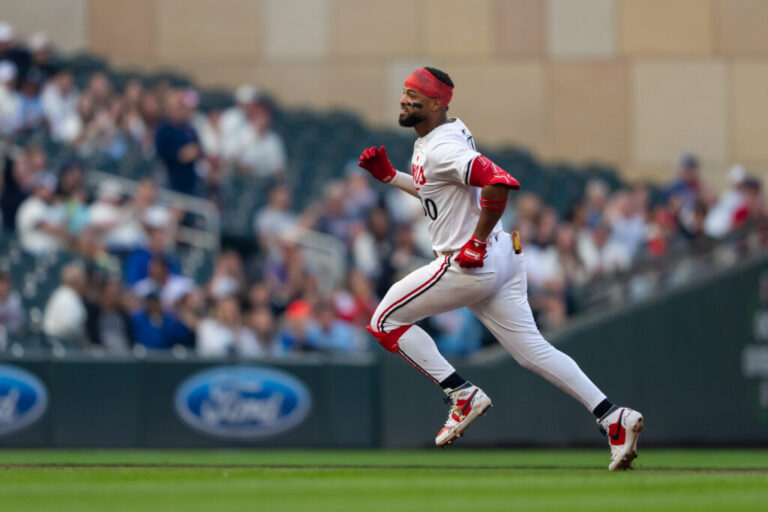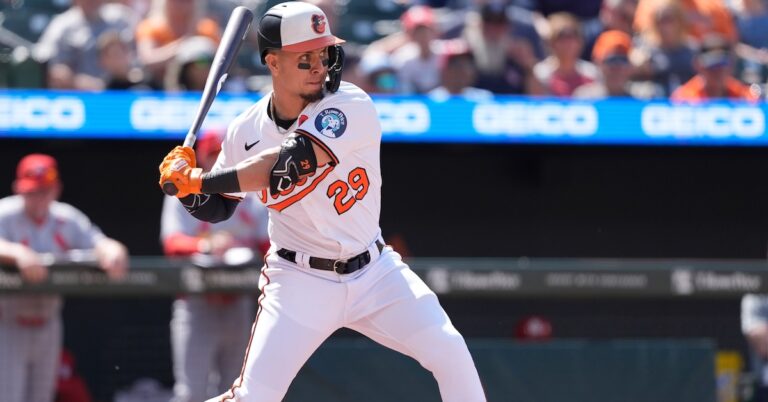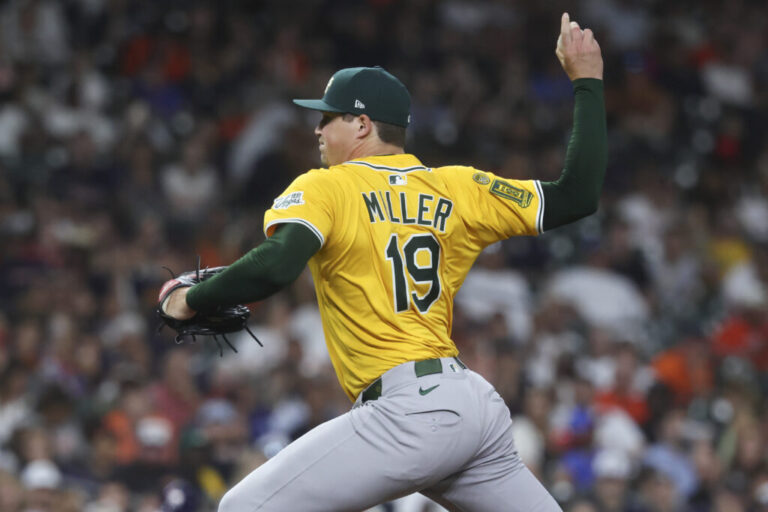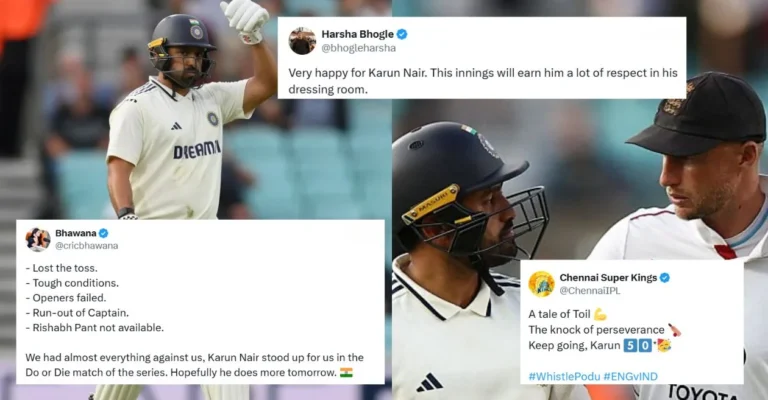
Jacob Misiorowski pitching for the Biloxi Shuckers in the Milwaukee Brewers organization, CCed by Liscense 2.0
With the conclusion of another fantastic MiLB season, StatCast metrics have become more prominent than ever in evaluations of the talent coming up throughout the league. While data from the Complex League, the Pacific Coast League, A+, and AA is currently ousted from the public eye, the available metrics from the Florida State League and the entirety of AAA provide enough of a basis for mainstream evaluation of minor-league talent. Although result-based analysis could contradict some of the underlying evaluation here, the data suggests a massive forwards leap for the rising phenoms emphasized here, both in terms of media prominence and prospect stock altogether.
Adam Serwinowski: Cincinnati Reds LHP, Low-A Daytona
Adam Serwinowski is a projectable southpaw continuously undervalued by mainstream prospect publications. A 15th round pick out of high school in 2022, the Reds seemingly struck gold on a young lefty with starter pedigree possessing a viable three pitch repertoire, arguably all of which grade out as above average or better.
The most oft-utilized pitch is a four-seam fastball, with exceptional ride from an average release at about 94 MPH, more than viable velocity from a LHP. Albeit inflated from the smaller dimensions of the Low-A ball in comparison to that of a major league ball, the pitch features 17” of induced vertical break, a well above average number compared to the league median for the arm slot. The lack of horizontal movement allows for the pitch to play specifically for swing and miss, which it has excelled at, generating a 26.4% whiff rate and 28.8% chase rate, both well above the league average. The fastball also avoids damage rather effectively, with hitters posting a miniscule .286 xWOBACON against it. Serwinowski zones the pitch at a much less than ideal rate at 51.7%, though the elite chase rate should encourage him to continue doing so, at least against competition in the lower minors who cannot seem to figure the pitch out.
Serwinowski’s most utilized secondary is the low 80s slider, a pitch that likely needs a bump in velocity to succeed against higher level competition. In terms of shape, there’s more drop than the average slider, with -2.4” of IVB and great gloveside movement with 9” of sweep. The pitch isn’t generating chases as effectively as it should, although when zoned it plays, garnering a 40% whiff rate and mitigating optimal contact to the tune of a .318 xWOBACON. If Serwinowski trades a bit of movement for increased velo and tightens up the pitch just a little, there’s a basis for a plus breaker here. To round out the repertoire, Serwinowski recently debuted a curveball in which he barely threw. This makes it difficult to evaluate the true effectiveness against opposing hitters, though a platoon-neutral putaway pitch would be huge for the growth of his repertoire. It’s an exciting profile with some variance in his possible outcomes, though there should be hesitance in just how much Cincinnati’s pitching development can improve the flaws.
Jacob Misiorowski: Milwaukee Brewers RHP, AAA Nashville
Jacob Misiorowski is a Stuff+ model’s dream. The velo and movement displayed are just otherworldly, and it’s a fair assessment to say ‘Miz’ has the best sheer stuff in the MiLB as a whole. The fastball sits at exactly 98 MPH, well above league average, though the 7’5” of extension allows the elite velocity to play even above those standards. The shape stands out as well, especially given the miniscule 5’3” release height. It features a whopping 16” of carry and 9.7” armside, dramatically different from the 13/11 shape he displayed in 2023. When paired with the exceptionally flat -4.1° vertical approach angle, the pitch racks up whiffs, especially when optimally located in the upper third of the zone, emphasized by the 33.3% whiff rate, one of the highest numbers among all AAA fastballs.
Delving deeper, Misiorowski throws a curveball with one of the best velo/drop combinations the game has ever seen. At -10/-8.7 shape, the curveball is the epitome of what modernized baseball pitching philosophists strive to construct. Very few pitchers are able to combine that level of velocity with that much vertical movement, with most of the major league examples releasing their breakers from a release height >6 feet. It’s a plus pitch (arguably double plus pitch) with upside to be among the best in the sport, and that’s highlighted with the outrageous 41% whiff rate Misiorowski has generated despite well below average command of the offering.
Misiorowski’s least used offering is a cutter/slider hybrid, and one of the best in baseball at that. At 93 mph, he’s getting about 5” of carry, significantly higher than that of the typical slider and marginally lower than the average cutter, with 1.7” of sweep, lining up with that cutter/hard gyro shape. The main purpose here is to effectively evade hard contact, most frequently against LHB, which it certainly does. Nobody seems to be able to square up the pitch, though it’s not particularly missing bats either, lining up with the intent.
It’s an extraordinary profile, something vastly different than any pitching prospect in recent memory. Though everything metrically pops when looking into the repertoire, the one glaring flaw with Misiorowski’s profile as a whole can be encapsulated with the 42.7% zone rate. To call the command shaky would be an understatement, as that is the only thing holding him back from being baseball’s top pitching prospect, if not the top prospect overall. There’s just so much reliever risk within the demographic of flamethrowing pitching prospects with well below average command, it plays detriment to Misiorowski’s appreciation from prospect evaluators at all levels, and rightfully so. Although somewhat unlikely, if Misiorowski elevates his command to even just average, there’s a blueprint for one of the most polarizing pitchers baseball has ever seen.
Billy Amick: Minnesota Twins 3B. Low-A Fort Myers
The 2024 National Champion Billy Amick slipped quite a bit when looking into the 2024 MLB Draft. He was viewed as a top 40 or so player in a relatively deep class, though he managed to fall to Minnesota 60th overall. Amick has always had encouraging pop, posting a 94.6 MPH average EV, 110.1 MPH 90th% EV, and 113,1 MPH max EV in his final season at Tennessee, all of which were in the 94th percentile or better for NCAA hitters. He’s had no struggle transitioning to wood, and albeit the sample is ridiculously small, we’ve seen improvement within the more philosophical aspects of hitting. He’s laying off more pitches than ever and even making increased contact against professional pitching.
Focusing more on the batted ball aspect, Amick hasn’t seen the drop-off college bats generally see when adjusting from composite to wooden bats, and although the EVs are marginally weaker it’s nothing remotely close to detrimental. He still ran a 43% HardHit rate and 10.2% barrel rate in the 312 pitch sample he encountered for Fort Myers. There’s some clear concern with the hit tool, one of the major factors in his unpredictable fall in the draft, as he often drops his hands at the plate leading to deviation from the launch angle sweet spot. Ignoring the glaring flaws defensively haunting Amick’s prospect stock, he has the offensive tools to become a power-hitting staple long term in a Minnesota lineup desperately in need of reinforcements in the near future.
Dalton Rushing: Los Angeles Dodgers C, AAA Oklahoma City
Dalton Rushing is a player that would likely already be making a major-league impact if not for the abundant talent the Dodgers already possess behind the plate, headlined by Will Smith, who signed a long term extension last offseason. Though Smith has his struggles defensively behind the dish, it’s difficult to envision the Dodgers moving him off the position, although Rushing appears to be a significantly more valuable player at catcher in just about all facets. Even if the Dodgers decide to move Rushing to 1B, or perhaps a corner outfield spot, the bat will play just about anywhere. He took a huge step forward in terms of results in 2024, and greatly exceeded the expectations set for him after reaching that premium prospect status around a year after being drafted in the second round.
Rushing has a tremendous approach at the plate, laying off anything outside of the zone, and crushing overly zoned mistake pitches. While a majority of players with a similar swing rate to Rushing carry that approach out even on in-zone pitches, Rushing contradicts the archetype by attacking, maintaining an above average zone swing rate at 69%. He’s walking 15.4% of the time while not being indefensibly passive on hittable pitches, something analytics departments love, especially valuable considering he’s an average defender behind the plate. Just to add onto an already phenomenal profile, Rushing has some of the best average and 90th% exit velocities in all of AAA, with 90.8 MPH and 105.4 MPH respectively.
Unlike Amick, he’s not faltering in terms of bat path and is relatively consistently hitting the ball optimally, with a SwSpt% above the AAA median. Rushing is one of the very few prospects that lacks a true glaring flaw within the profile. He can struggle connecting with better fastballs at times, though it’s nothing that’ll harm him to the point of no return. Assuming nothing drastically changes at the major league level and the Dodgers opt for a defensive improvement behind the plate rather than Smith’s perennial mediocrity, this is the profile of a top end catcher.





